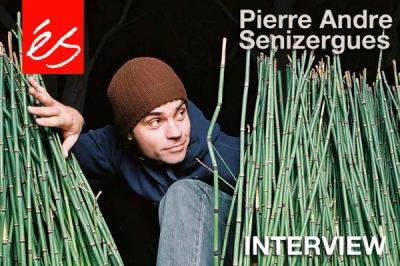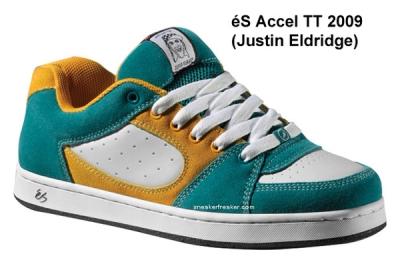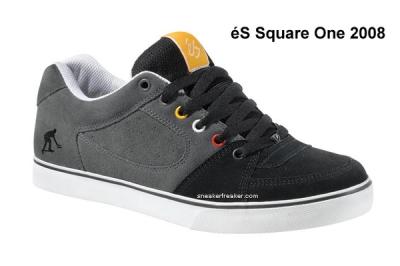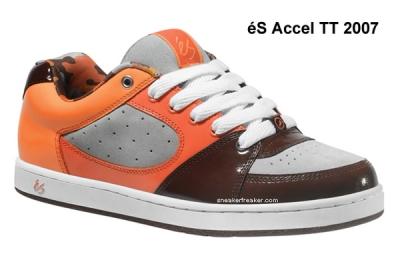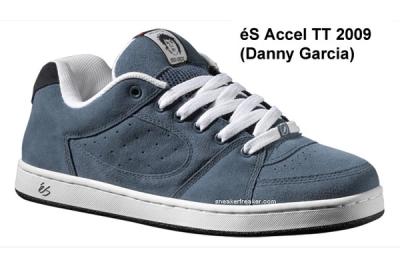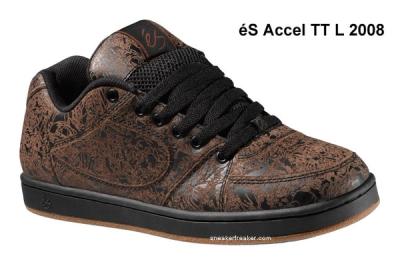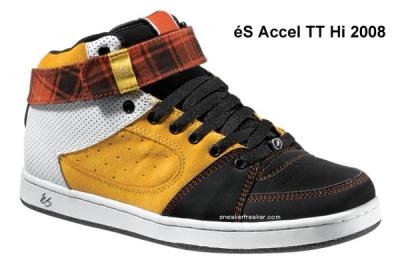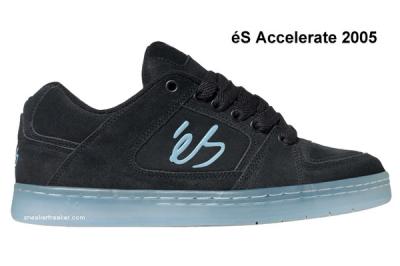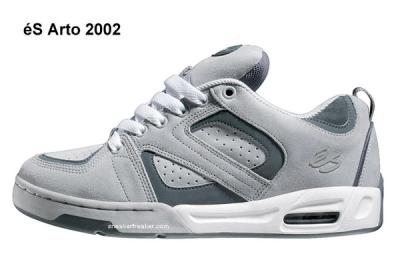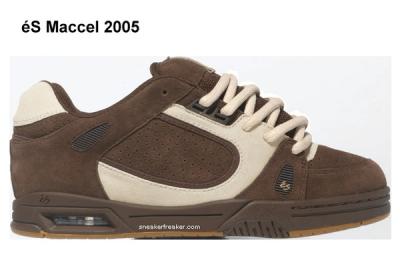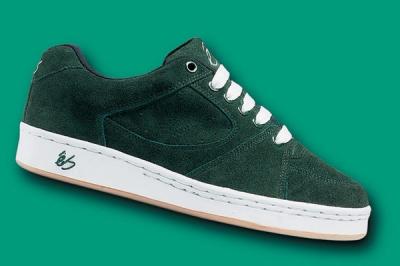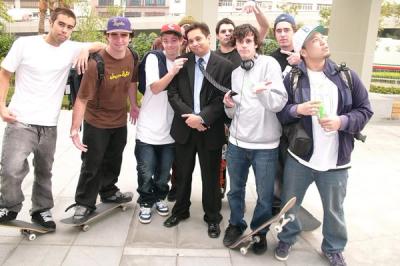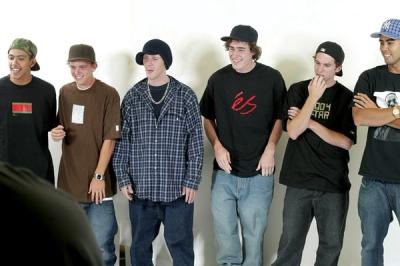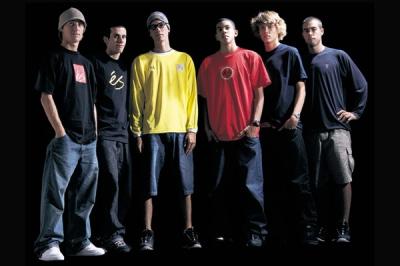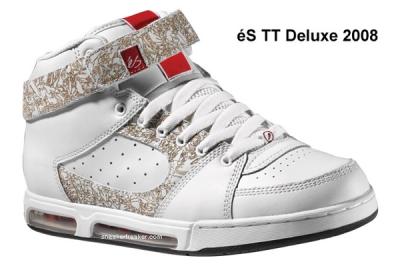Pierre Andre Interview (Ceo és)
When it comes to classic skate shoes, names like the Cab, half Cab, full Cab, Yellow Cab, the Rap, Kostons, Dunks, even the Jordan 1 come to mind. But every so often you realise a sneaky shoe has crept under the radar. Consider the éS Accel. First released in 1995, this humble and unobtrusive skate shoe has never been out of the shops since, which is a remarkable and possibly unique achievement. With variations including the Accel TT, Accel Plus (with velcro), Square One (vulc), Accelerate (airbags) and so on, éS was able to keep the shoe evolving as tastes waxed and waned through the years. With ample padding and a grippy sole, the Accel might visually be a tad on the boring side, but even we had to admit, it still looks rather fetching in black suede with a gum sole all these years later. In 2010, the Accel 3G will make its official appearance with a host of new features. Til then, say bonjour to Mr Pierre André Senizergues, CEO of Etnies and éS as we discuss his 30 years of skateboarding.
Hi Pierre! Needless to say you've been around the industry for a long time and you've seen the ups and downs...
Yeah, I've been skateboarding for over 30 years and I started in 1978! My first skateboard was a plastic one with plastic wheels called Banzai, like in Japanese. It was definitely a killing machine for sure. (laughs). Growing up in the 1970s in Europe, I came to America in 1985 when I was at the second boom of skateboarding, and I saw it die by the end of the 80s, and then now it seems like it's been much more stable since then. It's always been a goal with my work, to support skateboarding. When you see it dying, it's heartbreaking, so in the 70s and 80s I was thinking what I could do to help skateboarding to survive and one thing I realised was that shoes could support skating in a big way. A lot of kids who bought skate shoes were really not skating, but still there would be people wearing shoes.
Why do you think the industry has been more stable in the past decade or so? Is it because there's a proper structure in place?
Yeah I think some things happened. When I designed my first skate shoes they were having a lot of rubber on the outside - really specific for skateboarders. When I started reversing the construction and putting rubber under the leather (Etnies Rap), they became much more wearable and lifestyle oriented. I think what happened in the 90s with the expansion of snowboarding, it also brought skateboarding to be more popular, as a lot of snowboarders thought it was cool to skate also.
Let's go back to the beginning. When you decided to bring Etnies to the USA, did the industry roll out the red carpet and say bonjour Pierre!
Ha! No they said au revoir! Actually first when I came, I wasn't with Etnies, I was just on my own to skate but I bought the brand later on. Basically it was really bad timing because the recession at the end of the 80s was big in the US and a lot of skate shops were closing. But anyway, it was not really easy but I realised when I brought Etnies to the US, a lot of the brands that we used to wear for skating were disappearing like Airwalk and Vision for example and I realised at some point, the brands need to support the industry. This was a reason I decided to start éS, because I was also seeing a skateboarder guy like me and my friends, we started to dress with a more athletic look, maybe more stylish the way it was designed and that's why éS started.
In this late ‘80s period, which shoes set the benchmark for you? There was a lot of crazy stuff happening...
What I was seeing back then, I saw a lot of crazy stuff. Even I thought it was too crazy you know! And some of the skaters, they looked like clowns, all crazy colours, it was really out of control, with the big rubber and everything, they look like they come from the circus.
Kinda reminds me of the sneaker kids about three years ago!
Yeah! Hahahah, but don't forget there was all this crazy rubber on top of the shoes, making them much more puffy, much bigger and of course the colours, oh my God, it was nuts! Personally, coming from Europe, you know, I had maybe more of a style in mind and I decided to start making shoes slimmer, lower and more like tonal, more about the quality of the material, the durability, the performance of the shoes, rather than this craziness.
Sounds like you were ahead of your time. You were also one of the first brands to really go after the idea of creating pro models. There was Natas' shoe, and then you had your own personal shoe didn't you?
Yeah, the Natas shoes were first and I had the second shoes. The Natas was more designed for street skating. I even had another model I was working on for ramp. That was going to be for Claus Grabke, a German guy, one of the best ramp riders at the time. But it didn't happen. Eventually the idea was to get skaters designing their own shoes because skaters are full of creativity, and they deserve shoes as much as a basketballer.
Speaking of creativity.... I remember some of the old Etnies ads... there was one in particular that said ‘the most copied skate shoes in the world'. You were also very strong on the fact that you were an authentic skate brand. In an industry that's renowned for plagiarism, how do you see this issue has evolved?
Well, for example, I remember designing the Intercity. I realised I could keep it real low profile and cool, and I put a texture like leather on the toe area to make the shoes last longer. It was the shoe that was copied by most of the people making skate shoes back then. If you remember some of those brands like Duffs, everyone was copying that shoe, it was really out of control. But skateboarders in general always try to think differently and bring things to another level. So when we were looking at the big monster companies out there trying to say they were skateboarding, we could say they were not because the people behind the brand were not skateboarders.
Let's move on and talk about the Accel, because it's a shoe I've known about for a long time but never thought too much about. In actual fact it's been around for fifteen years so you have to give it due props. How has it survived for that long given it doesn't have any particularly distinctive features, or is that the point?
When I designed the shoes in '95 I was trying to design a classic profile that had something to do with éS. With éS back then, the idea was to bring a lot of style to skate shoes. If you look on the side of the Accel it has a contour on the panel. I think this has helped the shoes a lot to be recognised. The other thing, is that it has to be first and foremost, a very good skateboard shoe, so I made it with a very good rubber that will last four to five times longer than the regular rubber. I also made the shoes very comfortable with good padding on the side and top of the shoes. Overall, I think it is a very easy shoe to wear anywhere. A lot of pro riders picked it up right away. When I signed Koston he wore the Accel in black a lot. Tom Penny would wear the brown suede a lot and some other guys later on in the team, like P.J. Ladd as well. Arto Saari actually picked up the Accel and added an airbag to it to make it even more athletic looking. And then somehow the shoes became a classic that was very easy to wear, a standard. It's very interesting - it's rare to have a shoe like this that lasts a long time.
Within the Etnies family as well, the Rap, the Lo-Cut, even Sal's 23 shoe... there's a little bit of all those shoes tied up in the Accel. How do you distinguish between the brands in terms of product? What makes the Accel an éS shoe and not an Etnies shoe?
It has to do a lot with the design. In éS I will use more contour in the design, whereas when I design something for Emerica, I use a more angular type of design. On the Etnies it is a bit of a composition of the two. It can have contour but it can also have a very angular type of profile. I would say the Accel works a lot with the éS logo. If you look at the éS logo I made it based on style, using contours again. That's how it came together basically, it was the shape of the shoes and the logo itself.
And are you a Velcro fan? It did appear on the Accel Plus later on too.
Yeah, I like it. It depends on the shoe. Personally I like a lot of different styles, I can feel Velcro!
I guess what I'm implying is that these things come and go in terms of fashion. Speaking of which, why do you think we've seen such a huge demand for vulcanised styles at the moment. Is it just fashion?
I think generally vulcanised shoes don't have good performance in terms of how much impact you can take. It came historically more from a trend perspective. It went back from tech and hip-hop to indie rock. But now things are changing a little bit too because we know that vulcanised is staying. In the past it has come and go, but it seems that it's staying longer than it has done before. So with éS, we've been developing some vulcanised shoes with more technology, in particular the Square One. Also, as well as being vulcanised, the Accel has been made into so many different other shoes that worked out good, like the Accel TT, the one we did with full grain leather on top.
We also did one collaboration with Adrian Blanca, an amazing artist from Spain. He's able to draw things in large scale but all connected, and it's all about skateboarding. It's a lot of work but it looks pretty amazing. We also did an Acel TT with Scuba Steve, he's basically our team manager for éS. He is a funny guy, everyone loves him, so we decided to give him a shoe. But we brought a lot of our STI bio-mechanic application into the shoe so they are much more comfortable. And we also had the Accelerate in 2005, which focused on technology with a midsole gel system. It was the first time a skate shoe used a full-length gel midsole.
The 3G version of the Accel is still a while away, the last half of this year I think. Any hints you want to give away?
We will be hopefully pushing the envelope with skateboard technology. We are looking at new innovations and how we can reduce the impact on the body using the scientific research we've been doing for eight years with our Sole Tech Institute. Some of the things we've been doing for the 3G is slimming down the shoe, increasing flexibility, yet adding more reinforcement in the toe to increase durability. The heel has this new technology that we'll reveal when we get closer to market that helps lock down the heel. We're also using a System Flo2 Tongue for breathability and a System G2 Full Impact insole, basically a technology that reduces impact to a much higher level and works to reduce heel bruises.
Sounds high tech. Looking back for a minute, how far have we progressed in the evolution of skate shoes? Have we actually gone far at all, given that kids have gone back to wearing vulc?
That's a very good question. Kids going back to vulcanised shoes is a step back in a certain way. It's harder to develop technology in a vulcanised shoe than it is to develop in a cup-sole. We would have progressed a lot more if we kept on the cup-sole as a whole industry. For us, we keep pushing the cup-sole no matter what, and then we try and figure out how to bring some of those innovations into the vulcanised shoes. Of course you have different types of skateboarders. The newest, youngest skaters probably don't have quite so much pain yet in the knees and ankles, so they are able to use some of the vulcanised shoes. But I can see that as soon as pros are a bit older, even just in their twenties, they start going for the cup-sole because they realise they get more benefit when they land. We need both sides because we need to satisfy what people want, but also develop our performance.
How involved are you still in the design process? Or does business take up too much of your time?
I'm really involved actually. I'm in every product design brief and review. On top of this I still design shoes. I design a collection every year under Etnies.
Is that's what's kept you so intrigued by the shoe business all these years? I'm sure there's been many times where you could have sold out and retired to the Bahamas to drink cocktails. What's kept you at the grind to keep the business going?
Well I think it's just passion, you know? I am passionate about skateboarding and passionate about designing shoes and passionate about doing creative things that support and inspire youth. If it is building a skate park or designing shoes, or to do something about the environment, that's my passion. If I was retiring what would I do? I would have to do something... so there's no reason to retire!
Good to hear! Anything else you want to add about the Accel?
After fifteen years of Accel there will probably be another fifteen years to go, maybe one hundred years! The way I set up the company, I'm really looking at setting something up for the next century. Anything I do I try to do it sustainably and basically to make it work forever.
Thanks Pierre...

